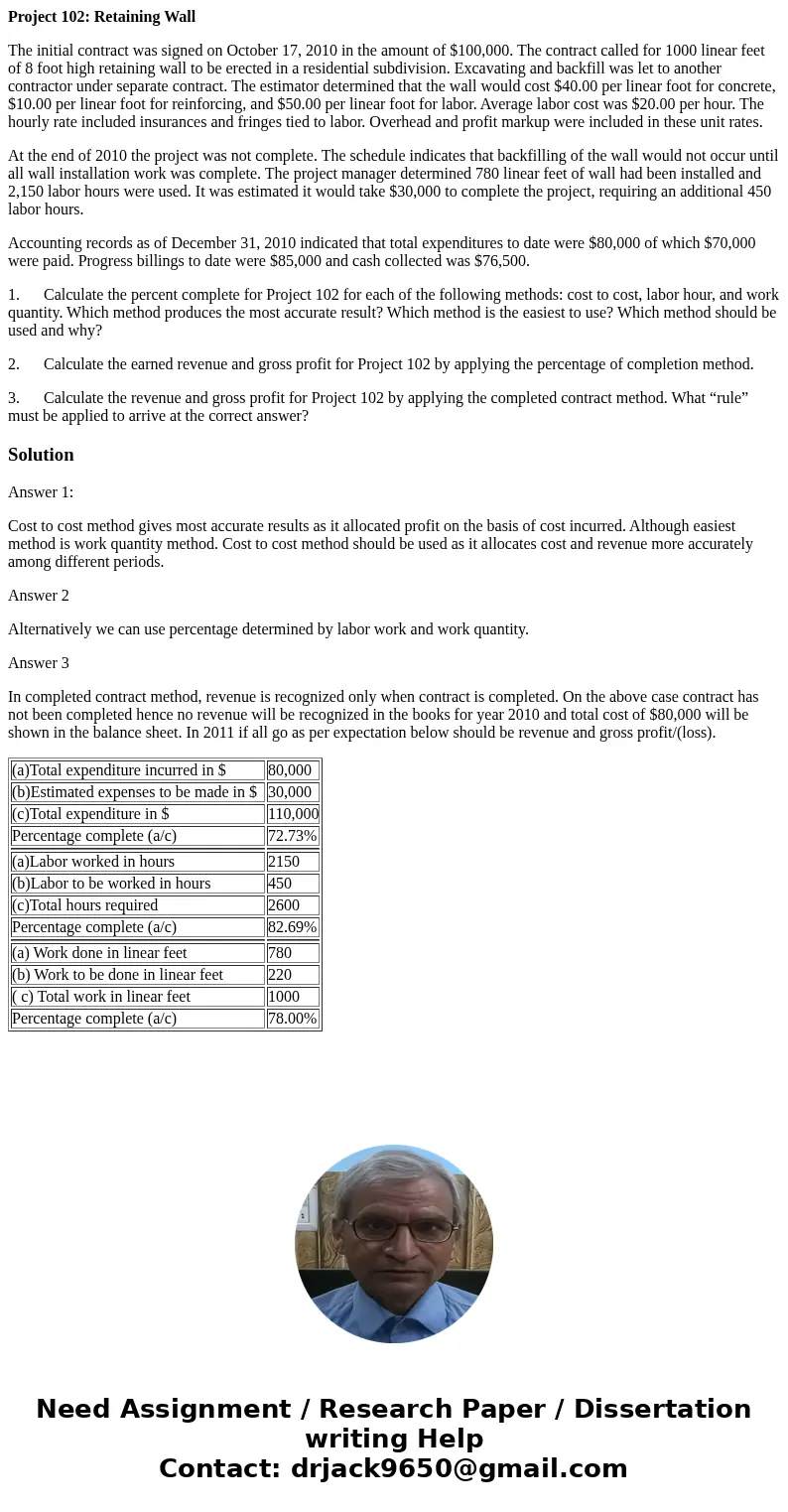Project 102 Retaining Wall The initial contract was signed o
Project 102: Retaining Wall
The initial contract was signed on October 17, 2010 in the amount of $100,000. The contract called for 1000 linear feet of 8 foot high retaining wall to be erected in a residential subdivision. Excavating and backfill was let to another contractor under separate contract. The estimator determined that the wall would cost $40.00 per linear foot for concrete, $10.00 per linear foot for reinforcing, and $50.00 per linear foot for labor. Average labor cost was $20.00 per hour. The hourly rate included insurances and fringes tied to labor. Overhead and profit markup were included in these unit rates.
At the end of 2010 the project was not complete. The schedule indicates that backfilling of the wall would not occur until all wall installation work was complete. The project manager determined 780 linear feet of wall had been installed and 2,150 labor hours were used. It was estimated it would take $30,000 to complete the project, requiring an additional 450 labor hours.
Accounting records as of December 31, 2010 indicated that total expenditures to date were $80,000 of which $70,000 were paid. Progress billings to date were $85,000 and cash collected was $76,500.
1. Calculate the percent complete for Project 102 for each of the following methods: cost to cost, labor hour, and work quantity. Which method produces the most accurate result? Which method is the easiest to use? Which method should be used and why?
2. Calculate the earned revenue and gross profit for Project 102 by applying the percentage of completion method.
3. Calculate the revenue and gross profit for Project 102 by applying the completed contract method. What “rule” must be applied to arrive at the correct answer?
Solution
Answer 1:
Cost to cost method gives most accurate results as it allocated profit on the basis of cost incurred. Although easiest method is work quantity method. Cost to cost method should be used as it allocates cost and revenue more accurately among different periods.
Answer 2
Alternatively we can use percentage determined by labor work and work quantity.
Answer 3
In completed contract method, revenue is recognized only when contract is completed. On the above case contract has not been completed hence no revenue will be recognized in the books for year 2010 and total cost of $80,000 will be shown in the balance sheet. In 2011 if all go as per expectation below should be revenue and gross profit/(loss).
| (a)Total expenditure incurred in $ | 80,000 |
| (b)Estimated expenses to be made in $ | 30,000 |
| (c)Total expenditure in $ | 110,000 |
| Percentage complete (a/c) | 72.73% |
| (a)Labor worked in hours | 2150 |
| (b)Labor to be worked in hours | 450 |
| (c)Total hours required | 2600 |
| Percentage complete (a/c) | 82.69% |
| (a) Work done in linear feet | 780 |
| (b) Work to be done in linear feet | 220 |
| ( c) Total work in linear feet | 1000 |
| Percentage complete (a/c) | 78.00% |

 Homework Sourse
Homework Sourse